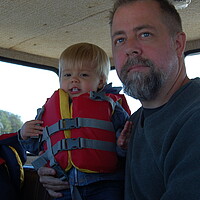After daylight saving time shift, beware of 'microsleeps'
| MADISON, Ga.
An already overworked, sleep-deprived country prepared Saturday for the annual ritual of time-shifting by setting clocks forward by an hour, thus darkening the morning, extending the evening, and grinding the sleep cycle gears good and hard.
The annual Daylight Saving Time shift, which takes place (in all states but Hawaii and Arizona) at 2 a.m. Sunday, may be logical enough policy-wise, but the sudden skip in time has proven to have severe, potentially dangerous consequences for those forced to abide by it. Sleep scientists say effects of the shift can include a pernicious phenomenon known as “microsleeps,” or momentary losses of concentration at critical times.
Susceptibility to “microsleeps” increases after the time shift, resulting in a spike in car crashes, including fatal ones where alcohol is involved, as well an increase in workplace injuries. A general sense of DST ennui also results in more “cyber-loafing” than usual, thanks to DST's impacts on the “ego depletion model of self-regulation," according to the Journal of Applied Psychology.
“Small changes in the amount of sleep that people get can have major consequences in everyday activities,” writes Stanley Coren, a researcher at the University of British Columbia, in the New England Journal of Medicine. “It is likely that the effects are due to sleep loss rather than a nonspecific disruption in circadian rhythm, since gaining an additional hour of sleep at the fall time shift seems to decrease the risk of accidents.”
To fight microsleeps and other DST side effects, sleep scientists at the University of North Carolina suggest going to bed a few minutes earlier than usual Saturday night and for the first few nights after the shift. Getting outside to soak up that extra evening sunshine is also a good idea, they say, and not just for the sleep-aiding effects of Vitamin D.
Given the annual wave of DST-related accidents, there's been an organized though still unsuccessful campaign to ease the impact of DST. One study found that 70 percent of Americans support moving the time-shift moment to Friday night – 2 a.m. Saturday – which would give workers and students an extra day to adjust before trudging off on Monday morning.
But a lot of Americans might be more willing to deal with microsleeps and ego depletion if states made an even more worker-friendly change to DST: “Move the spring-forward part of daylight savings time to 4 p.m. on Monday,” a commenter writes on the New Orleans Times-Picayune website. “That way it's suddenly 5 p.m. and time to go home.”





